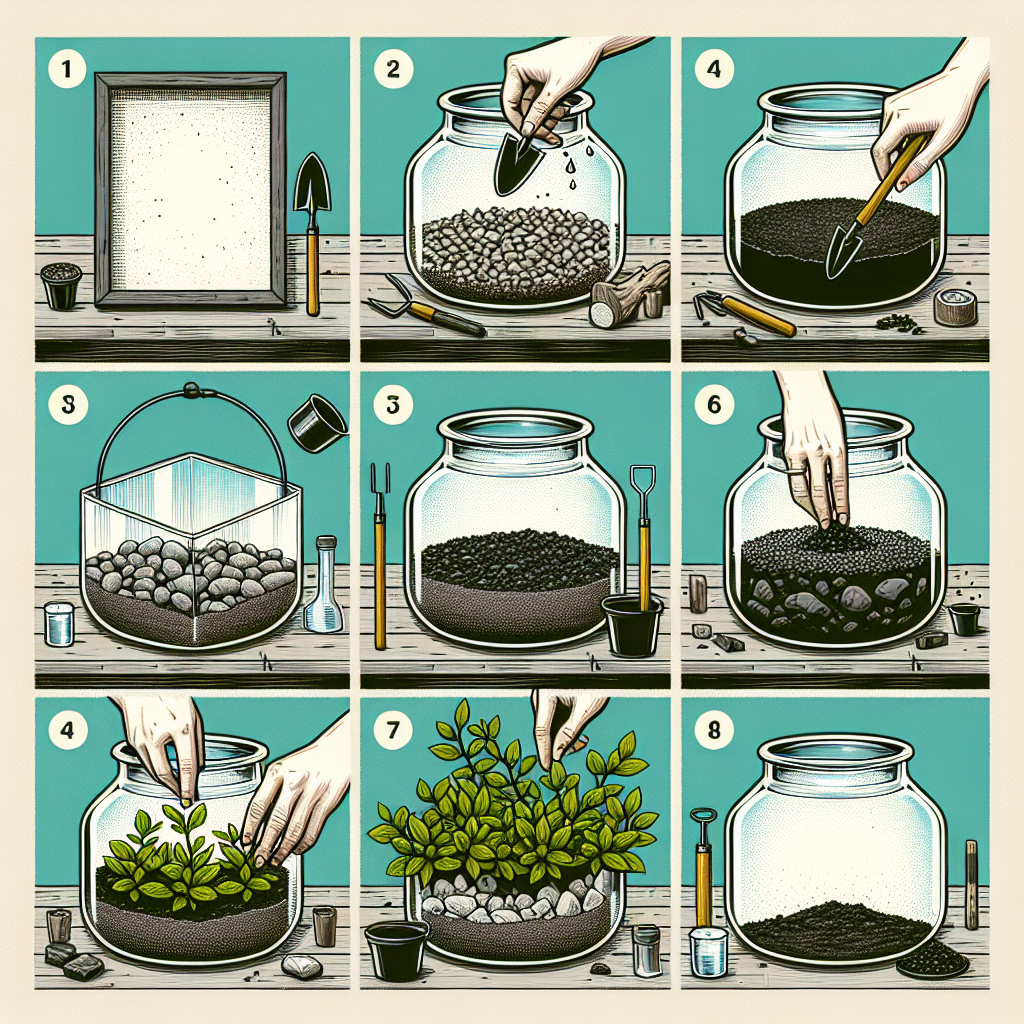
How to build a terrarium
Introduction to Terrariums
Terrariums have surged in popularity in recent years, serving as attractive decorations and unique gifts. These miniature gardens offer a refreshing burst of nature in both homes and offices. Moreover, building a terrarium can be an enjoyable and rewarding project that doesn’t require extensive gardening experience.
In this article, we will delve into the materials needed, step-by-step instructions, and essential tips on how to build a terrarium that thrives. So, if you're ready to bring a piece of nature indoors, gather your supplies, and let’s get started!
What is a Terrarium?
A terrarium is a transparent container, typically made of glass, where plants are grown in a controlled environment. They can be open or closed, depending on the type of plants you wish to cultivate and the humidity levels required. Terrariums not only provide a space for plants but also create a beautiful display, showcasing a mini ecosystem.
Benefits of a Terrarium
- Low Maintenance: Once established, terrariums require minimal care.
- Air Purification: Plants inside a terrarium can improve indoor air quality.
- Educational Tool: They serve as a hands-on way to learn about ecosystems.
- Aesthetic Appeal: Terrariums offer a unique and stylish decor option.
Materials Needed to Build a Terrarium
Before we dive into the process of creating your terrarium, it’s essential to gather all necessary materials. Here’s a list of what you’ll need:
- Glass container (jar, bowl, or a specialty terrarium container)
- Small rocks or pebbles for drainage
- Activated charcoal (to prevent odor and mold)
- Potting soil suitable for the plants you choose
- Plants (e.g., ferns, moss, succulents, or air plants)
- Decorative elements (optional, such as figurines or stones)
- Tools (tweezers, spoon, and chopsticks for planting)
- Water spray bottle (for misting the plants)
Choosing the Right Container
The choice of container is critical when learning how to build a terrarium. Here are some tips to help you select the perfect one:
- Size: Choose a container that fits your space and accommodates a variety of plants.
- Shape: Consider shapes that allow for creativity, such as geometric or organic designs.
- Openness: Open terrariums are great for succulents, while closed ones suit humidity-loving plants.
Step-by-Step Guide: How to Build a Terrarium
Now that you have your materials and container, let’s go through the steps of constructing your terrarium.
Step 1: Prepare the Container
Start by cleaning your glass container to remove any dust or debris. Ensure it's completely dry before proceeding to the next step.
Step 2: Create a Drainage Layer
It’s essential to create a drainage layer at the bottom of your terrarium to prevent overwatering. Follow these instructions:
- Add a layer of small rocks or pebbles, about an inch deep.
- Sprinkle a thin layer of activated charcoal on top of the rocks to help with filtration.
Step 3: Add the Soil
Next, add the potting soil suitable for your plants. Aim for about 2-3 inches, depending on the size of the plants you intend to use.
Step 4: Select and Plant Your Flora
Choose small plants that will thrive within the confines of your terrarium. It’s best to opt for plants with similar care requirements. Here are some examples:
- Succulents: They prefer drier conditions and more sunlight.
- Ferns: They thrive in humidity and shade.
- Mosses: They can be a great carpet layer for your terrarium.
- Air Plants: Perfect for smaller terrariums and require minimal soil.
When planting, use tools like tweezers or chopsticks to place them without disrupting other layers. Arrange them with varying heights for a more dynamic look.
Step 5: Personalize Your Terrarium
Add decorative elements such as small rocks, figurines, or crystals to personalize your terrarium. Be creative while maintaining a balanced look!
Step 6: Water Your Terrarium
Lightly mist the plants with water using a spray bottle. Be cautious not to overwater; a light misting is usually sufficient to begin.
Step 7: Placement
Place your terrarium in an appropriate location where it'll receive suitable light. Most plants thrive in indirect sunlight. Avoid direct, harsh sunlight to prevent overheating.
Care Tips for Your Terrarium
After you've successfully created your terrarium, maintaining it is crucial for ensuring its longevity. Here are some care tips to keep in mind:
- Watering: Monitor the moisture levels; an open terrarium will require more frequent watering than a closed one.
- Pruning: Regularly trim overgrown plants to encourage healthy growth and prevent overcrowding.
- Cleaning: Occasionally wipe down the interior of the glass with a damp cloth to remove dirt and condensation.
- Light Requirements: Adjust placement as needed based on how plants react to light exposure.
Common Issues and Solutions
While terrariums are relatively low-maintenance, various challenges may arise. Here’s a quick guide to common issues:
| Issue | Symptoms | Solutions |
|---|---|---|
| Mold Growth | White, fuzzy patches on plant or soil. | Reduce humidity by removing the lid (if closed) and cutting back on watering. |
| Overwatering | Yellowing leaves and root rot. | Allow soil to dry out and ensure proper drainage. |
| Underwatering | Drooping leaves and dried out plants. | Provide a gentle mist and check soil moisture levels. |
| Pest Infestation | Visible insects or damage to plants. | Remove infested plants and clean the container thoroughly. |
Final Thoughts
Building a terrarium can be a fulfilling project that brings a touch of nature into your everyday life. Whether you choose to use it as a relaxing hobby or a unique decorative piece, it allows you to express your creativity while engaging with nature.
By following the steps outlined in this article and applying the care tips, you will have a thriving ecosystem right within your home. Remember to enjoy the process and experiment with different plants and designs. Happy gardening!
By Guest, Published on October 13th, 2024